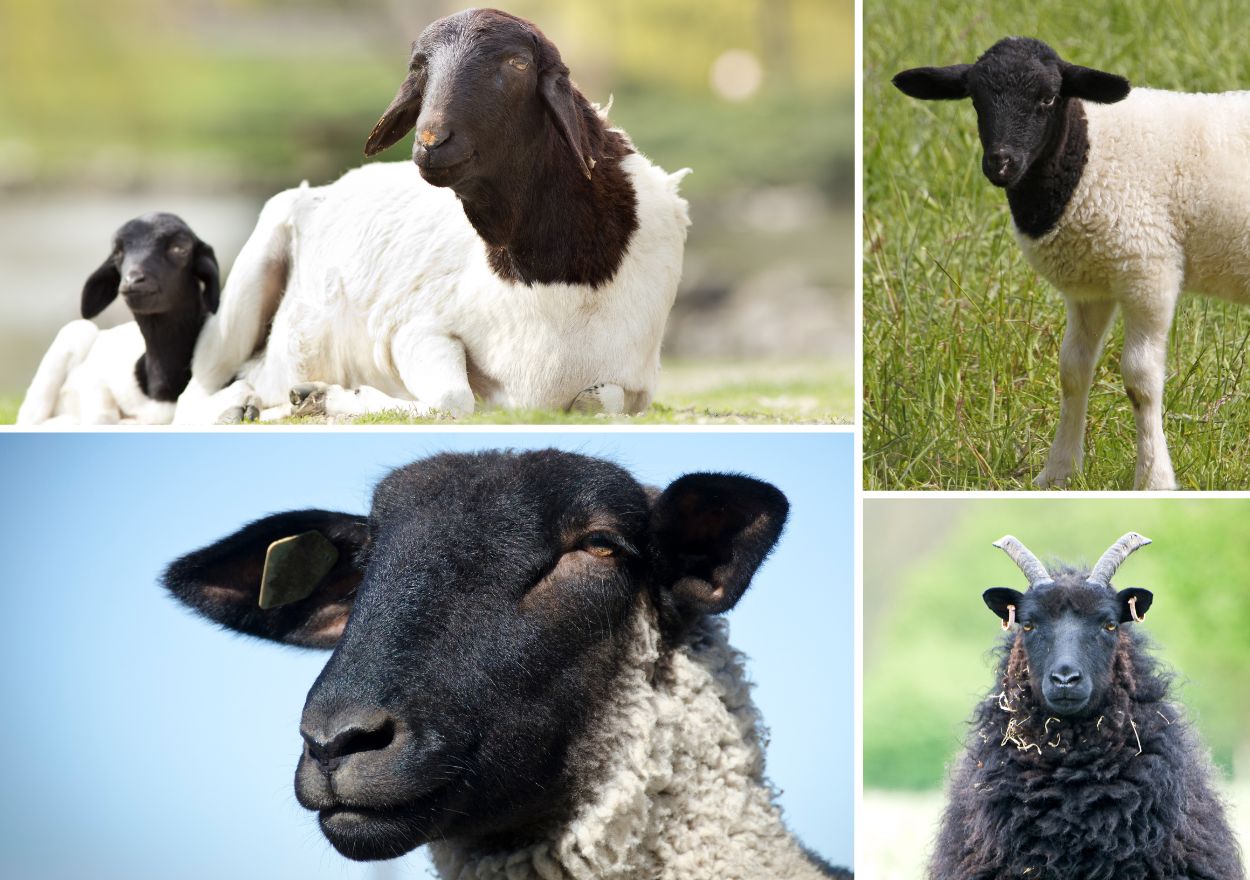
Sometimes, in addition to the main characteristics that define sheep breeds and for which they are raised, some farmers and homesteaders also consider physical traits when choosing a type of sheep.
While some choose to raise miniature sheep, others opt to raise sheep with black heads or black faces on their farms. It all depends on each one’s preferences, desires, and expectations.
Below, I have compiled a list of the most common sheep with black heads. This list also includes sheep that have just black faces and black noses.
Contents
1. Somali
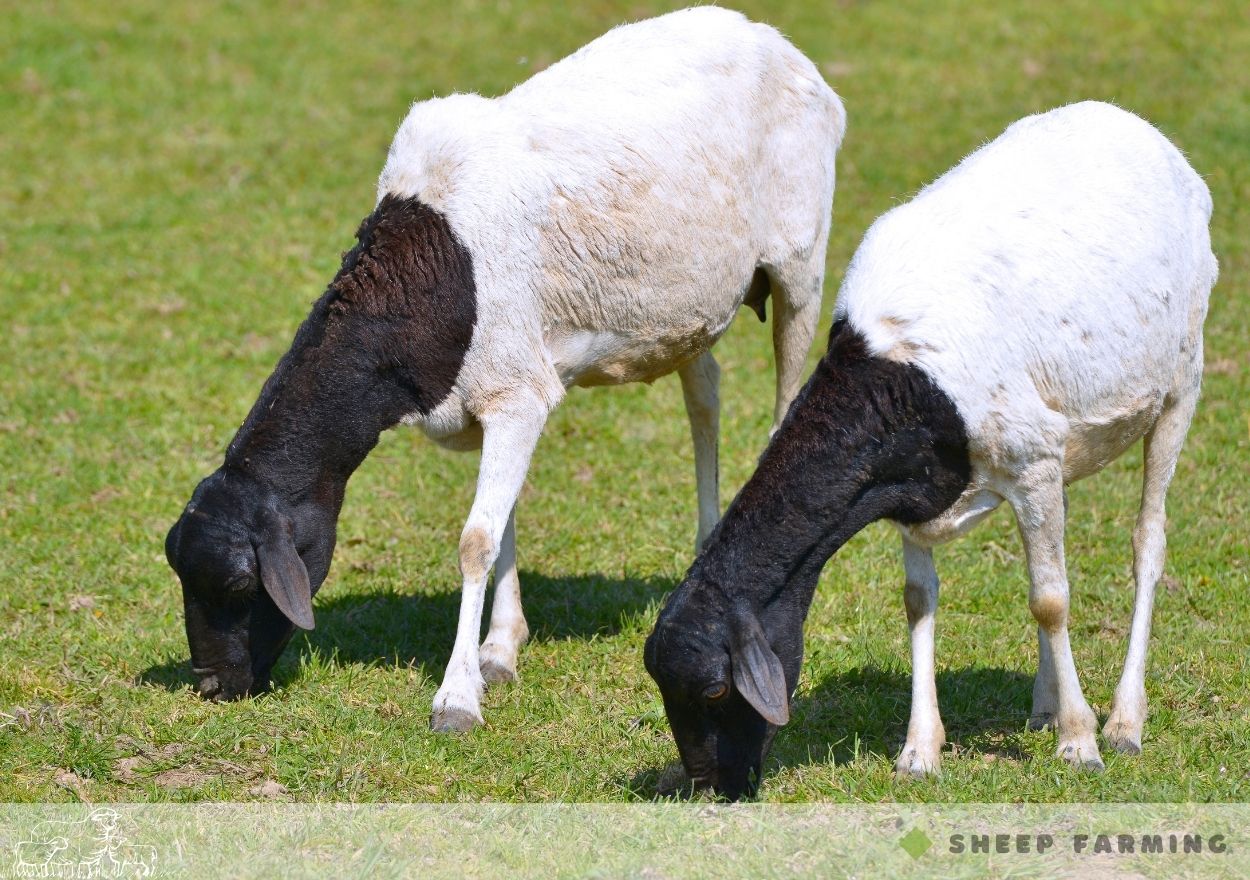
The first black headed sheep on the list are Somali sheep.
These sheep are most commonly found in the Horn of Africa region, which includes countries like Somalia, Djibouti, Ethiopia, and parts of Kenya.
Somali sheep are well adapted to the hot and arid climates of this region, making them a popular choice among farmers in these areas. They are specifically bred for their ability to thrive in such harsh conditions, and they are an important livestock resource for many communities in the Horn of Africa.
2. Blackface
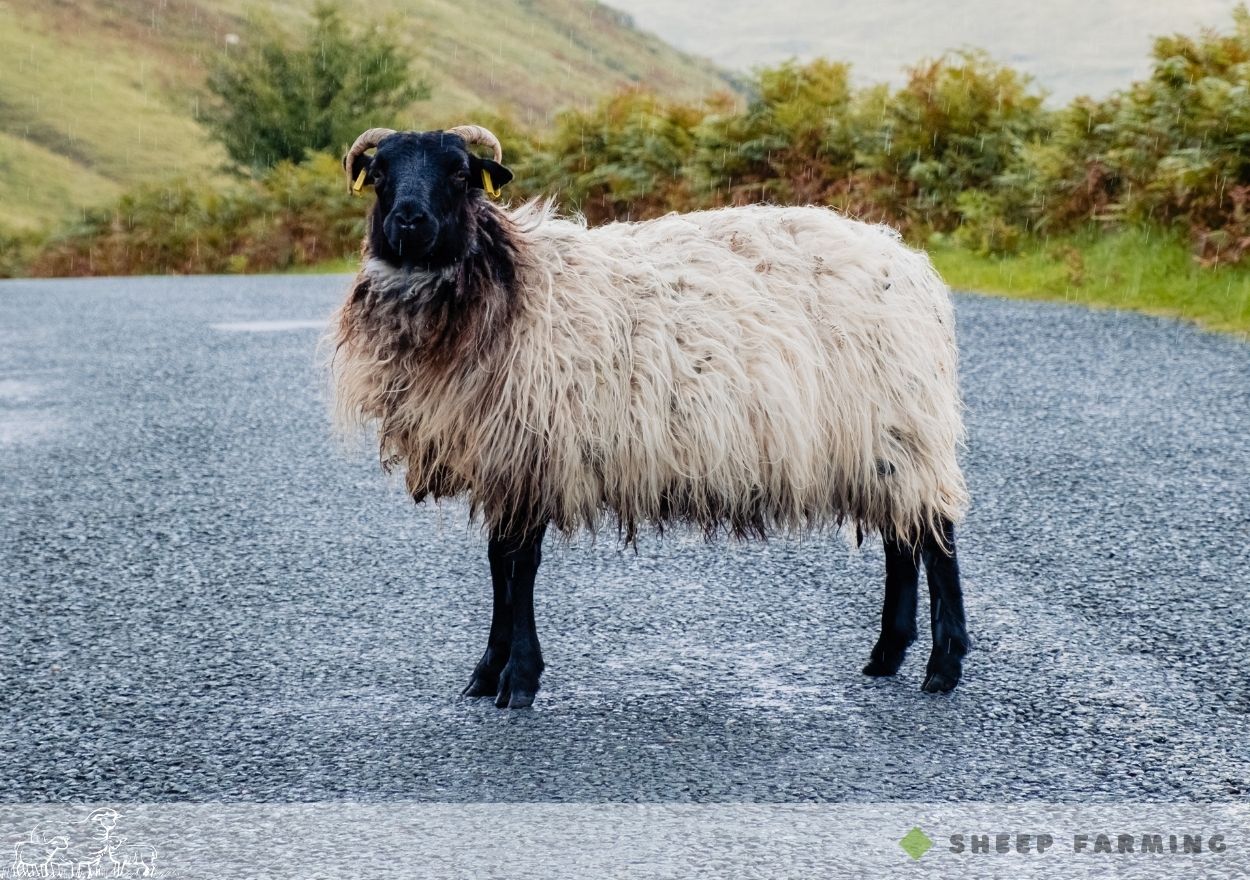
Blackface Sheep are predominantly raised in Scotland and are recognized for their unique black faces and legs, complemented by a white fleece.
They are well-suited to the rugged and hilly landscapes of Scotland and are often raised for their meat.
Blackface Sheep are also used in crossbreeding programs to improve the hardiness and adaptability of sheep in various regions.
While they are most common in Scotland, you can also find them in other parts of the world where they have been introduced or used in breeding programs.
3. Dalesbred
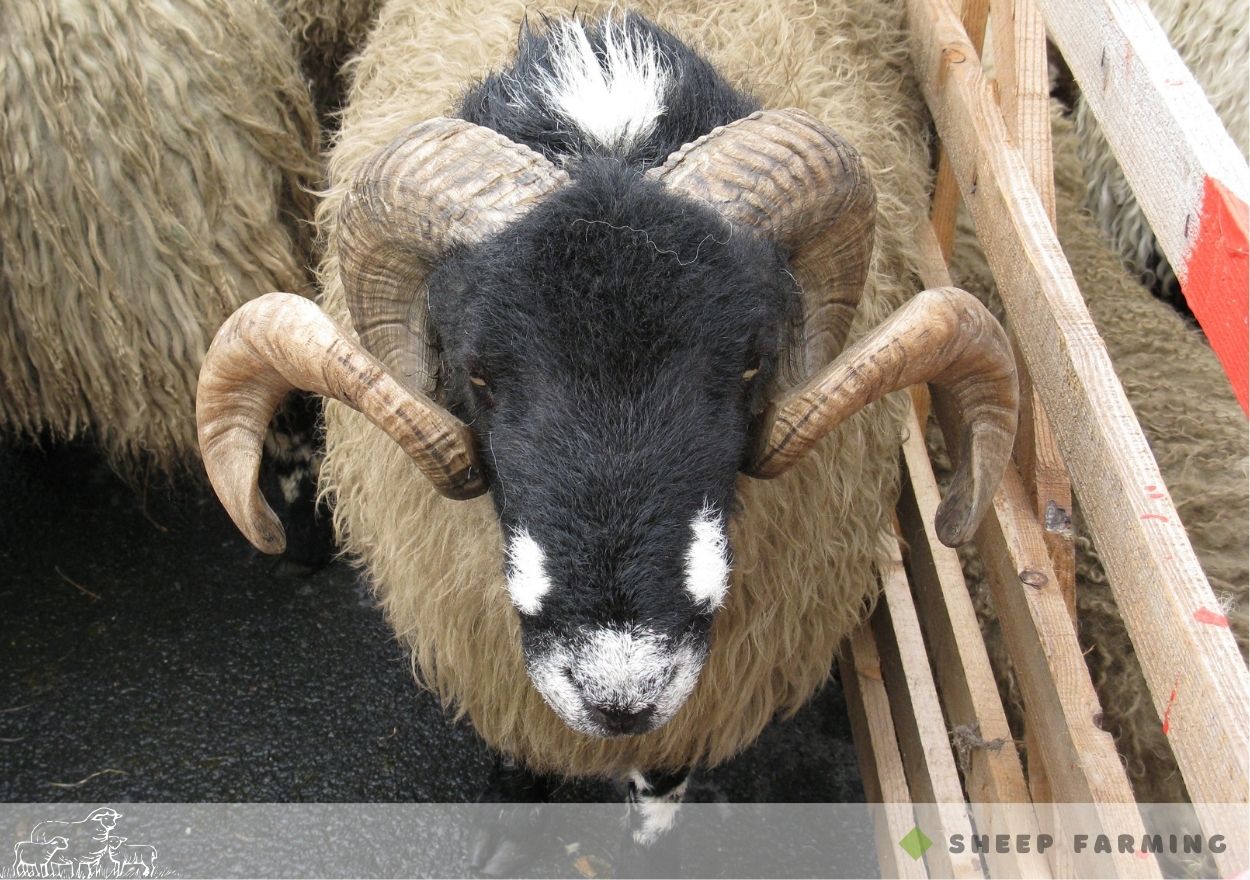
Dalesbred sheep easily fall into the category of black-headed sheep, even if they have a few small white spots on their faces. They generally have white around their noses.
These sheep are primarily raised in the upland areas of Northern England, particularly in the Yorkshire Dales region.
Farmers from Northern England choose to breed them due to their ability to live in harsh environments characterized by rugged and hilly terrain. The Yorkshire Dales, Cumbria, and parts of Northumberland are some of the main regions where you’ll find Dalesbred sheep being raised.
The distribution of this breed around the world is relatively limited compared to more widespread sheep breeds, and they are not typically raised on a large scale outside of their native region.
4. Norfolk Horn
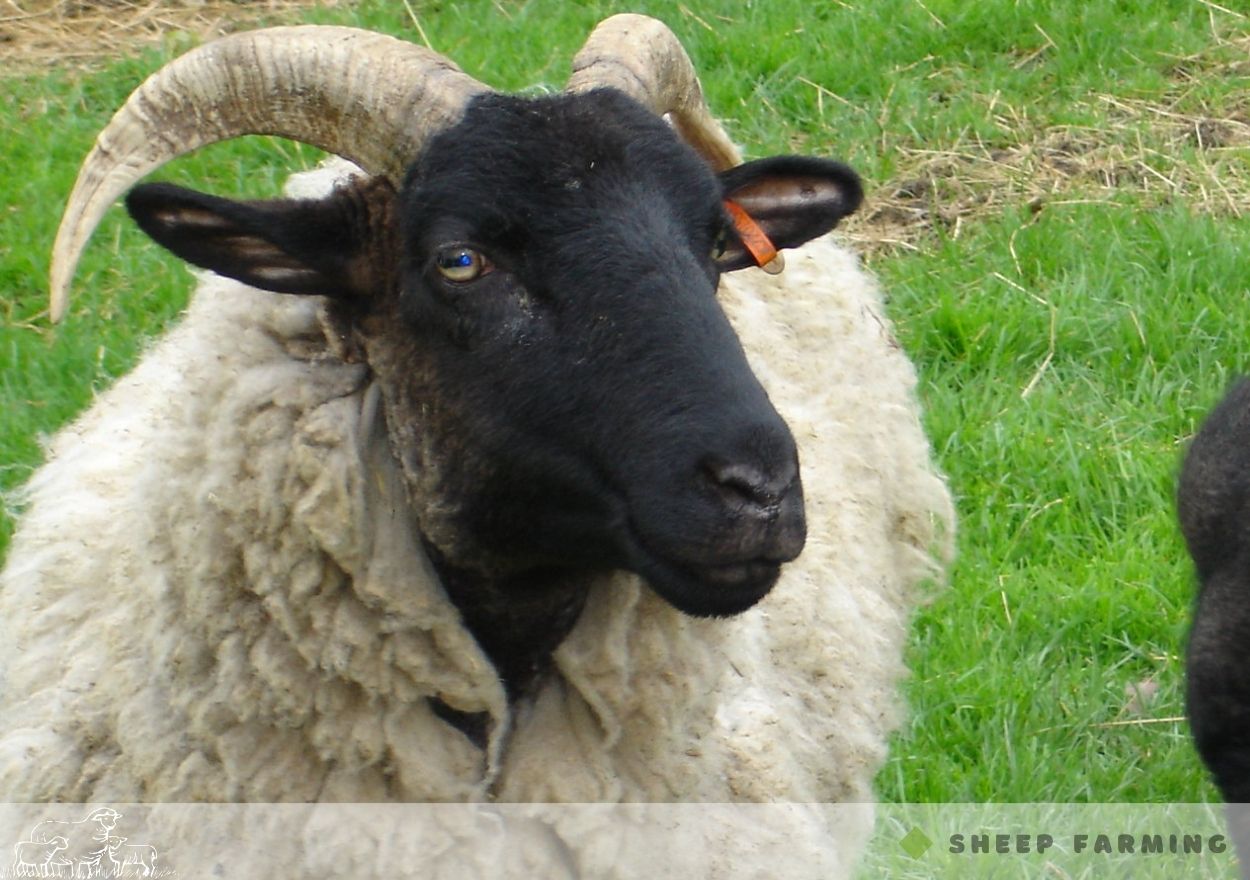
The Norfolk Horn is another sheep that has a black head. It’s also called Blackface Norfolk Horned.
Farmers raise these sheep for various reasons, including their historical significance, adaptability, and specific qualities that make them valuable for any sheep farmer.
Norfolk Horn sheep are an old breed with a rich history. Some farmers are interested in preserving and promoting heritage breeds as a way to connect with the agricultural traditions of the past.
The Norfolk type has been recognized for more than 380 years, being mentioned in ‘The Beauties of England, Cambridgeshire’ by Robert Ryece (or Reyce) in 1610.
Compared with other black-headed sheep breeds that can be found in uplands or lowlands areas, Norfolk Horns thrive on the sandy heathlands of the Breckland area of Norfolk, England.
5. Blackhead Persian
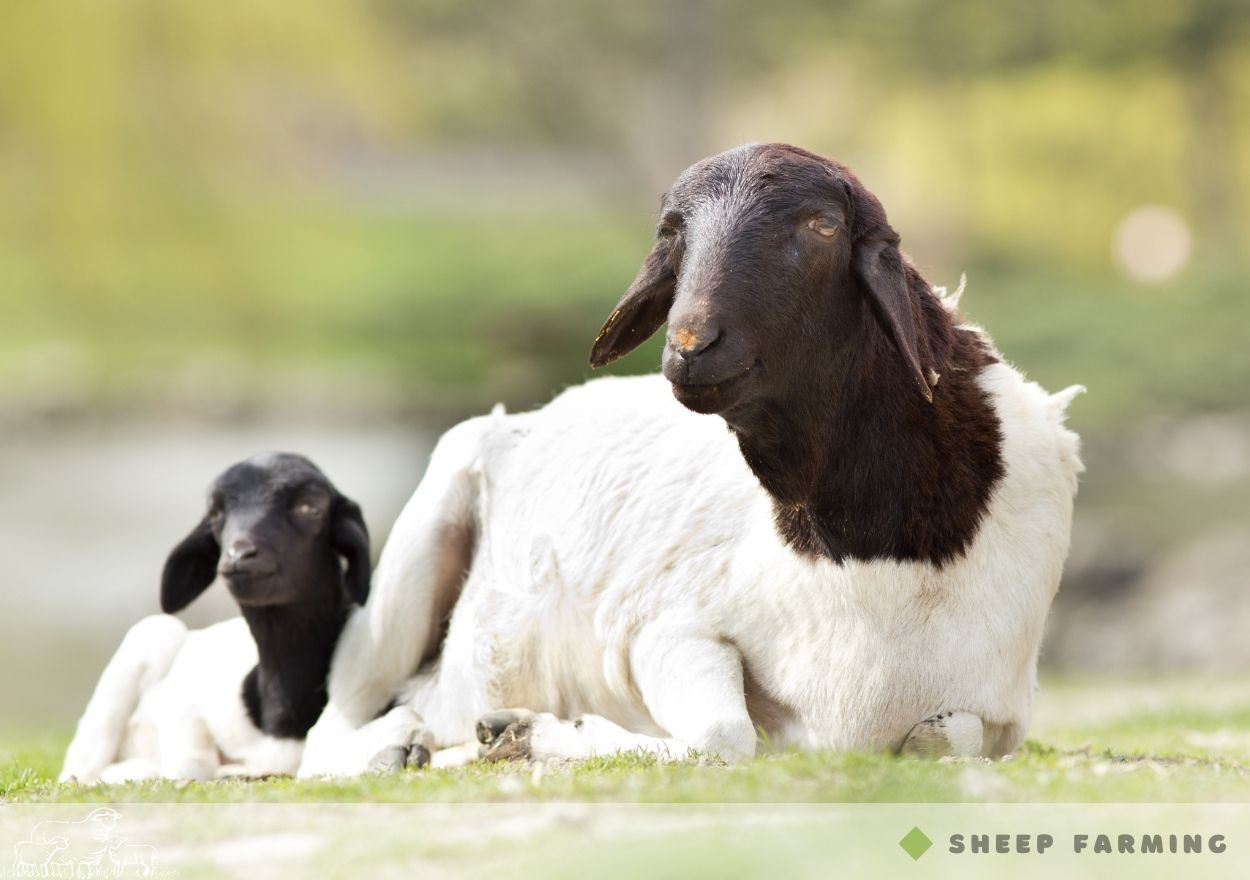
The Blackheaded Persian is a breed of sheep primarily found in the region of East Africa known as Somalia and is a direct descendant of the Somali sheep.
As the name suggests, these sheep are known for their distinctive black head and neck, which often extend down to the shoulders. The rest of their body is covered in white fleece.
Their black head and white body make them a visually distinctive and culturally significant breed in the region.
Blackheaded Persian sheep are also recognized under the name of Swartkoppersie in the Caribbean region and Somalis Brasileira in Brazil where they managed to adapt very well to the region’s humid climate.
6. Lithuanian Black-headed
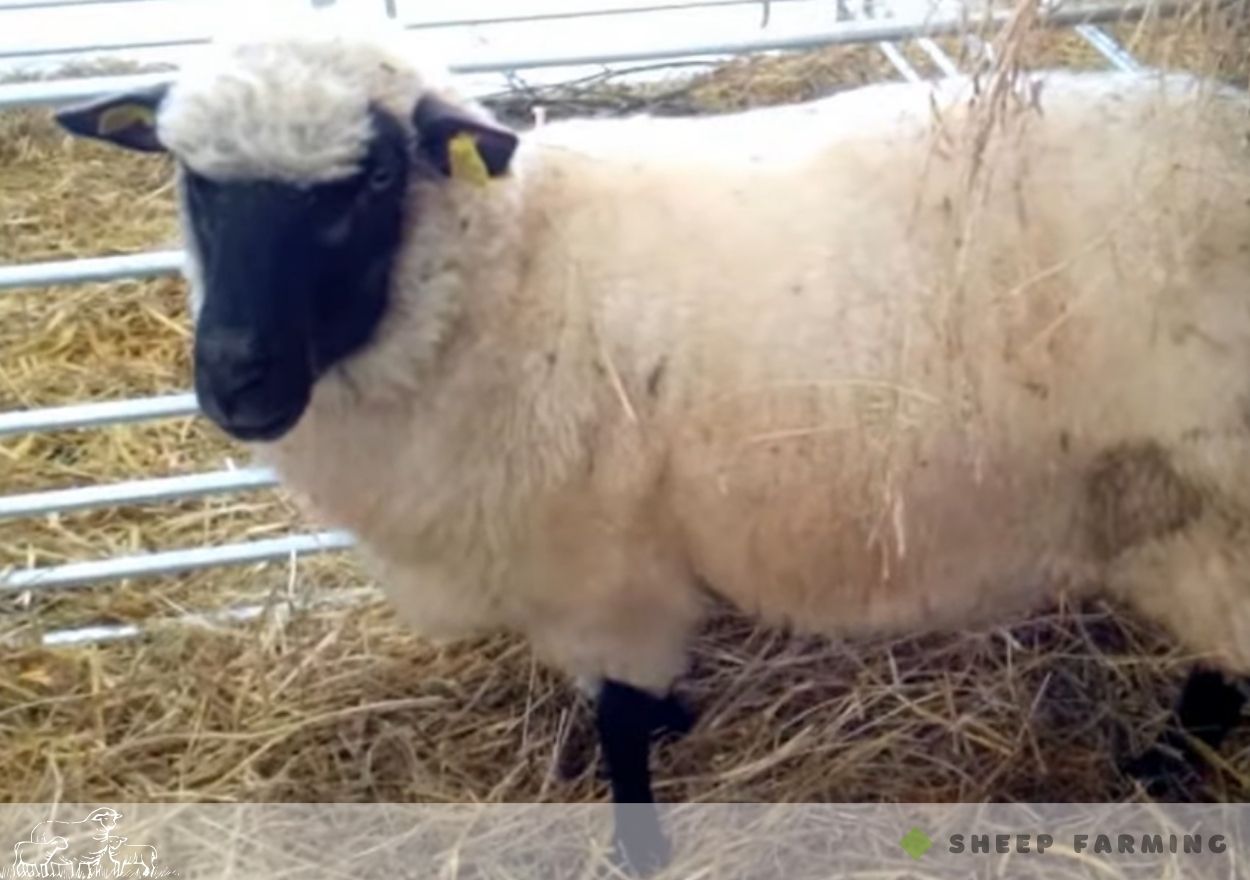
The Lithuanian Black-headed sheep, also known as the Lithuanian Blackface sheep, is a breed of domestic sheep native to Lithuania.
They are raised for meat and wool production, conservation grazing, genetic diversity, and more.
Outside of Lithuania, which is their primary habitat, Lithuanian Black-headed sheep do not enjoy as much popularity as other sheep breeds. Still, local farmers choose to raise them as they are a natural treasure of the country.
7. Dorper

Dorpers are black-faced and hornless sheep that originated in South Africa.
The name ‘Dorper’ is a combination of ‘Dor’ from Dorset, a British breed used in the breeding program, and ‘per’ from Persian, referring to the Blackhead Persian sheep, another breed used in the development of the Dorper.
Dorper sheep have gained popularity not only in South Africa but also in many other countries, including the United States, Australia, and various parts of Asia.
Their distinctive black head and commercial attributes have made them a valuable choice for sheep farmers in various regions around the world.
8. Llanwenog

The most distinctive trait of Llanwenog sheep is their attractiveness due to their distinctive face and head.
The contrast between their white fleece and the black face and ears is a defining and eye-catching characteristic of Llanwenog sheep, making them easily identifiable in the field.
Llanwenog sheep are a breed native to Wales, specifically the Llanwenog region, and have historically been more regionally focused. Their popularity has grown over the years, particularly in the United Kingdom.
9. Shropshire
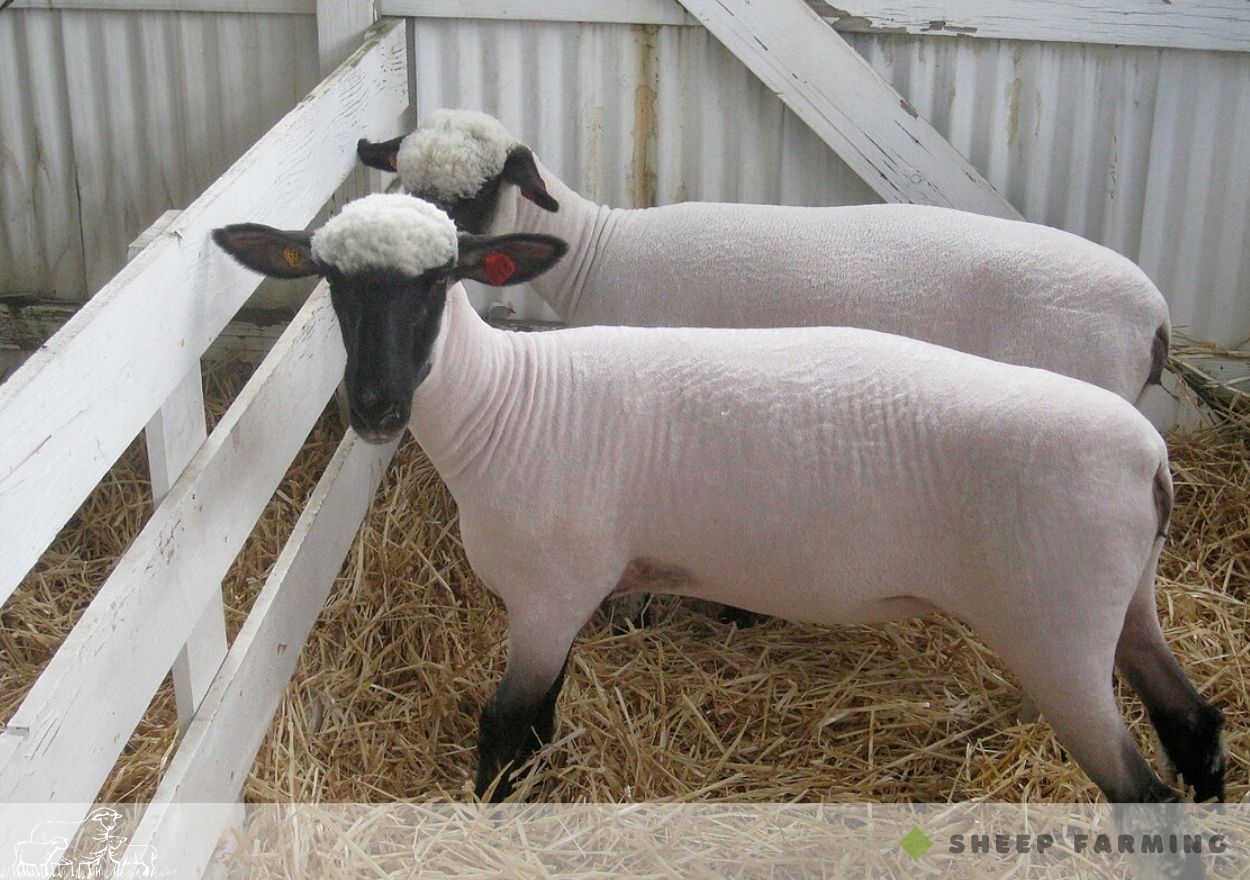
Shropshire is another black-faced sheep breed that originated in Shropshire County, England, during the late 18th century. They were developed through the selective breeding of native sheep breeds in the region, particularly the native horned sheep called Longmynd.
Their black face, black ears, and the white curly fleece on their head are defining features of the breed that set them apart from other sheep breeds.
Shropshire sheep have been exported to various countries and regions around the world, and they have gained popularity in places where their meat and wool qualities are appreciated. They are commonly raised in the United Kingdom, the United States, and Australia.
10. Suffolk
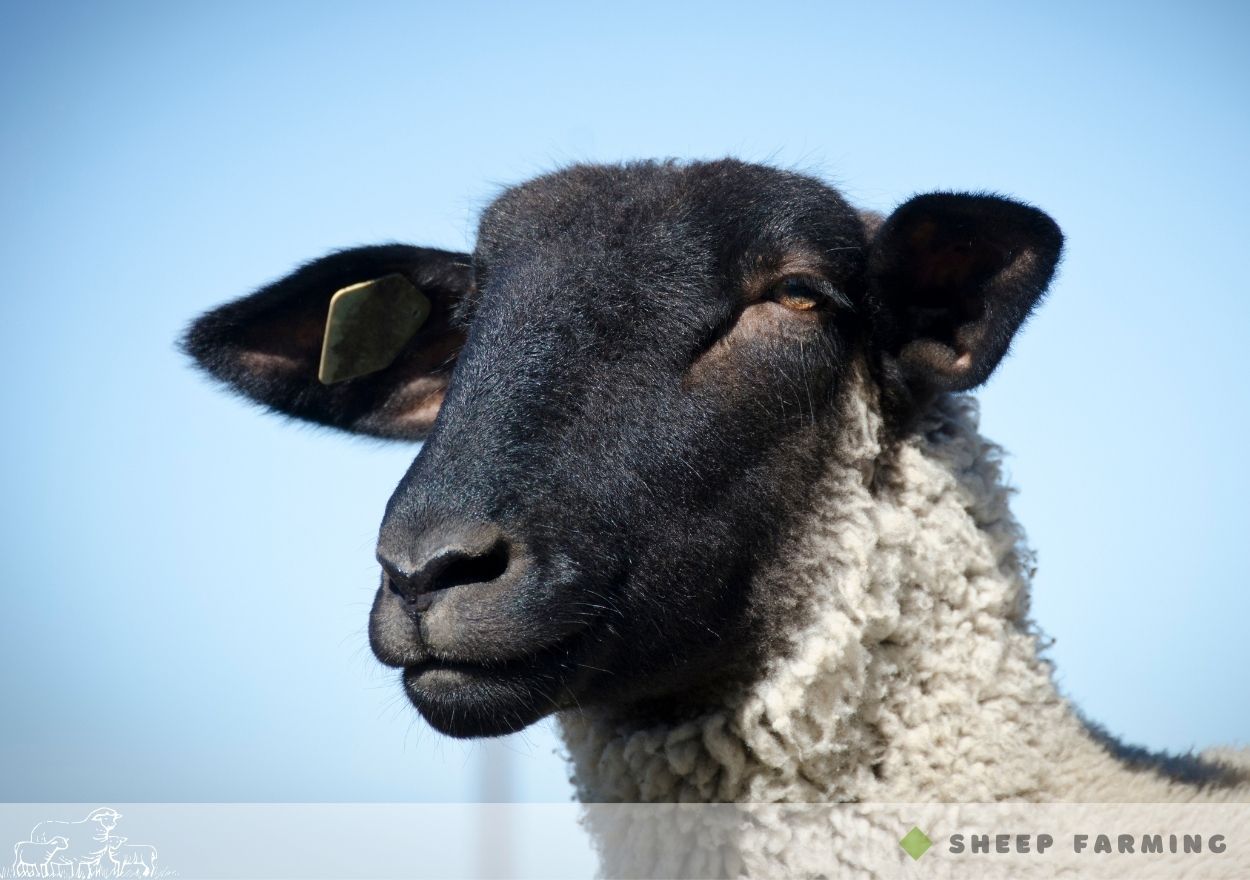
The next black-headed sheep on the top is the Suffolk sheep.
These sheep are popular and well-known among sheep breeds, both nationally and internationally. They are recognized for their meat production qualities, ease of management, and distinctive appearance.
These black-headed sheep have been exported and raised in many countries around the world, such as the United States, Australia, New Zealand, Canada, Argentina, Brazil, South Africa and France.
11. Heidschnucke
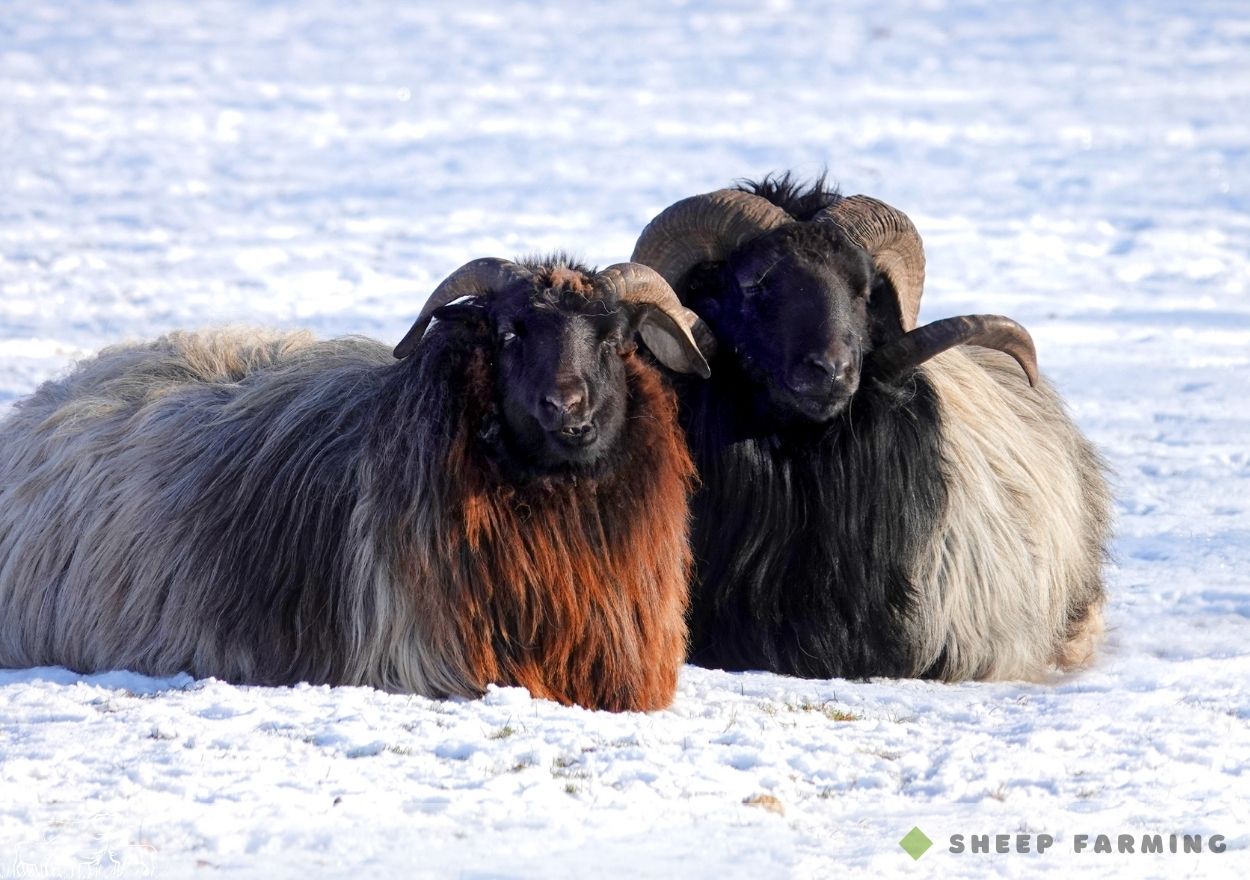
Heidschnucke sheep have their heads, faces, and legs black. This black coloration is a genetic trait that has been selectively bred over generations. The fleece is predominantly white.
Heidschnucke sheep are well adapted to the challenging environmental conditions of the North German Heath, which include sandy soils, heathland vegetation, and a maritime climate. They are not common around the world.
These sheep provide additional income opportunities for local farmers through eco-tourism activities.
12. Beulah Speckled Face

The Beulah Speckled Face sheep is easily recognizable by its unique mottled face, characterized by a mix of black or dark brown spots against a white background. This distinctive facial coloration is what gives them their name.
The Beulah Speckled Face sheep is primarily found in Wales, United Kingdom and is not a widely distributed breed on a global scale.
13. Clun Forest
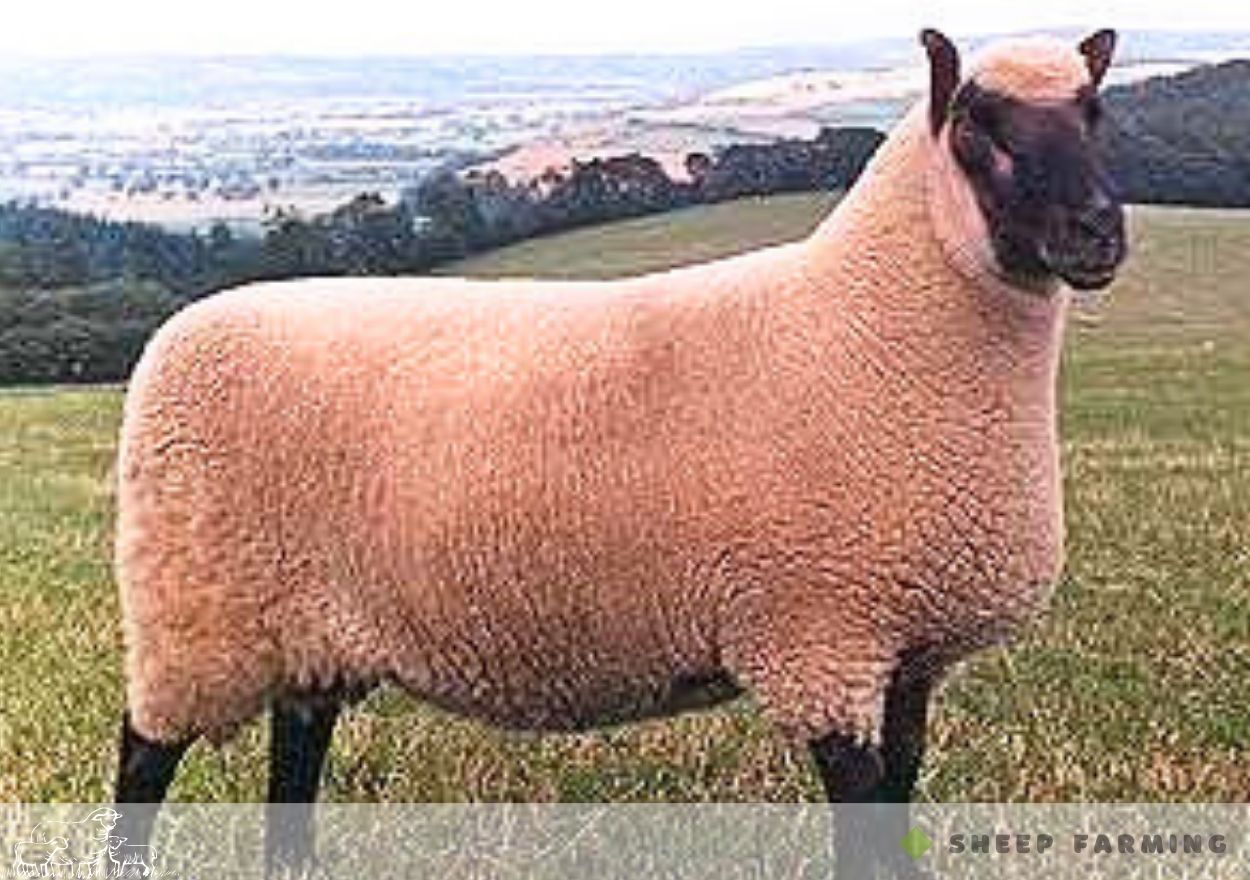
The last black-faced sheep on our list is the Clun Forest sheep
Clun Forest sheep are a breed of domestic sheep originating from the border region of England and Wales, specifically from the Clun Forest area in Shropshire, England.
One of the defining traits of Clun Forest sheep is their black face, typically adorned with a white blaze or star-shaped marking on their forehead.
Other breeds of sheep that can fall into the categories of black nose, black face, or black head sheep can be Valais Blacknose, Hebridean Sheep, Aberblack, Roussin sheep, Derbyshire Gritstone, Karakul, Pomeranian Coarsewool, Black Welsh Mountain, and Cambridge sheep.


